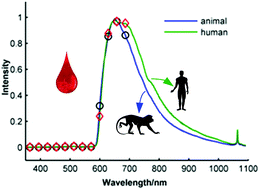Optimal wavelength selection for visible diffuse reflectance spectroscopy discriminating human and nonhuman blood species
Abstract
The species identification of human and nonhuman blood is an important and immediate challenge for forensic science, veterinary purposes, and wildlife preservation. Current methods used to identify the species of origin of a blood stain are limited in scope and destructive to the sample. We have previously demonstrated that visible diffuse reflectance spectroscopy combined with the PLS-DA method can realize the discrimination of human and nonhuman blood. Research studies have proved that the application of appropriate wavelength variable selection prior to model calibration can be greatly beneficial in providing a more reliable and parsimonious model. Apart from improving the prediction ability, the usage of variable selection will also reduce the experimental work. Moreover, the cost of a high-performance optical emission spectrometer and a supercontinuum white light laser source is comparatively high. In contrast, diode lasers, fixed-filter spectrometers and diode array spectrometers, which are very common products, greatly cut the cost of measurement systems. The key to use this kind of spectrometer is to find the optimal wavelength combination for getting a fine calibration. In this paper, we used the Equidistant Combination Multiple Linear Regression (ECMLR) method for wavelength selection. Compared with the results of full-spectrum PLS-DA, the ECMLR method could enhance the performance of identified models. Happily, for time related validation, the prediction effect of the ECMLR method was slightly better than that of the full-spectrum PLS-DA method. The overall results sufficiently demonstrate that the PLS-DA model constructed using wavelength variables selected by an appropriate wavelength variable method can be more effective and accurate.


 Please wait while we load your content...
Please wait while we load your content...